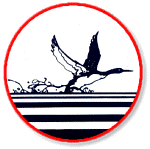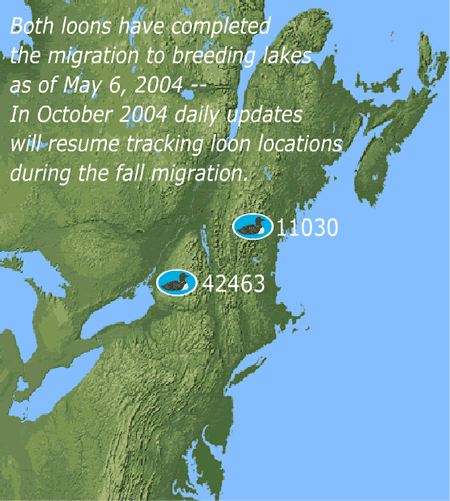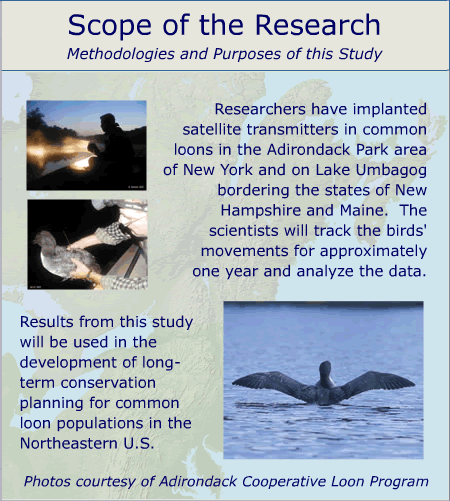Common Loon Migrations, 2003-4
| This page is an alternative format to the Flash file which presents this content in a dynamic and interactive interface. | ||||||||||||||||||||||||||
| | ||||||||||||||||||||||||||
Biologists are attempting to learn more about the fall migrations of the common loon. By implanting radio transmitters in adult loons, scientists are able to gain important information about migration routes, staging areas, and the locations of wintering grounds. | ||||||||||||||||||||||||||
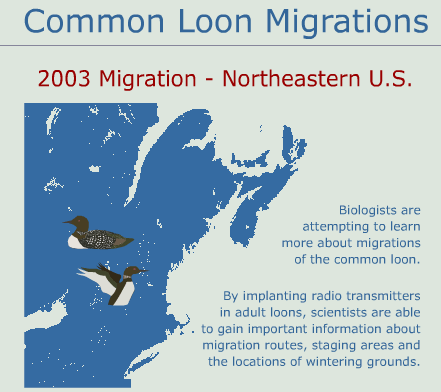 | ||||||||||||||||||||||||||
| ||||||||||||||||||||||||||
2003 Common Loon Migrations 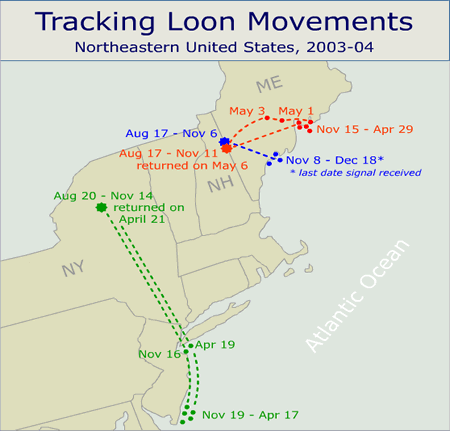 | ||||||||||||||||||||||||||
Loon Locations
| ||||||||||||||||||||||||||
Why is this study important? Scientists currently know little about common loon migrations and wintering grounds that are important for productivity and survival. In order to better plan for long-term conservation of loon populations, wildlife biologists are attempting to determine where these birds occur during migration, winter and other non-breeding periods. Loons may be at risk from exposure to ocean contaminants and spills, entanglements in fishing gear, and other offshore habitat disturbances. | ||||||||||||||||||||||||||
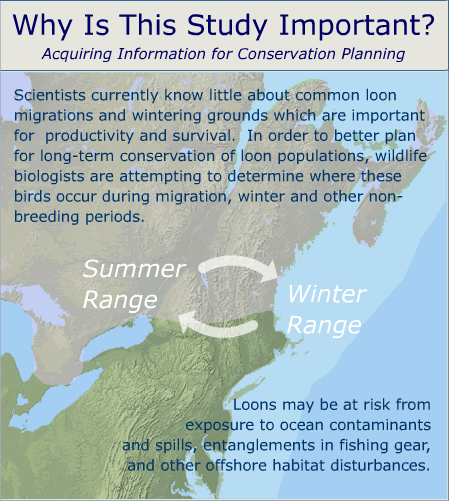 | ||||||||||||||||||||||||||
Scope of the Research Researchers have implanted satellite transmitters in common loons in the Adirondack Park area of New York and on Lake Umbagog bordering the states of New Hampshire and Maine. The scientists will track the birds' movements for approximately one year and analyze the data. Results from this study will be used in the development of long-term conservation planning for common loon populations in the Northeastern Unites States. | ||||||||||||||||||||||||||
| ||||||||||||||||||||||||||
The Impact of Weather Large movements of birds in the autumn often occur after a low pressure system has passed through and high pressure is moving in, accompanied by strong winds from the northwest. | ||||||||||||||||||||||||||
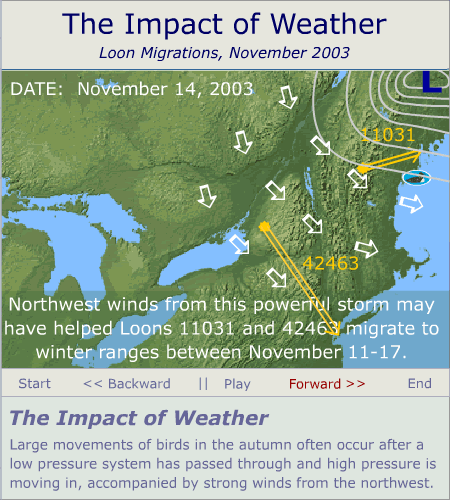 | ||||||||||||||||||||||||||
Alternative content:
|
||||||||||||||||||||||||||
 |
||||||||||||||||||||||||||
Page Last Modified: April 3, 2018








